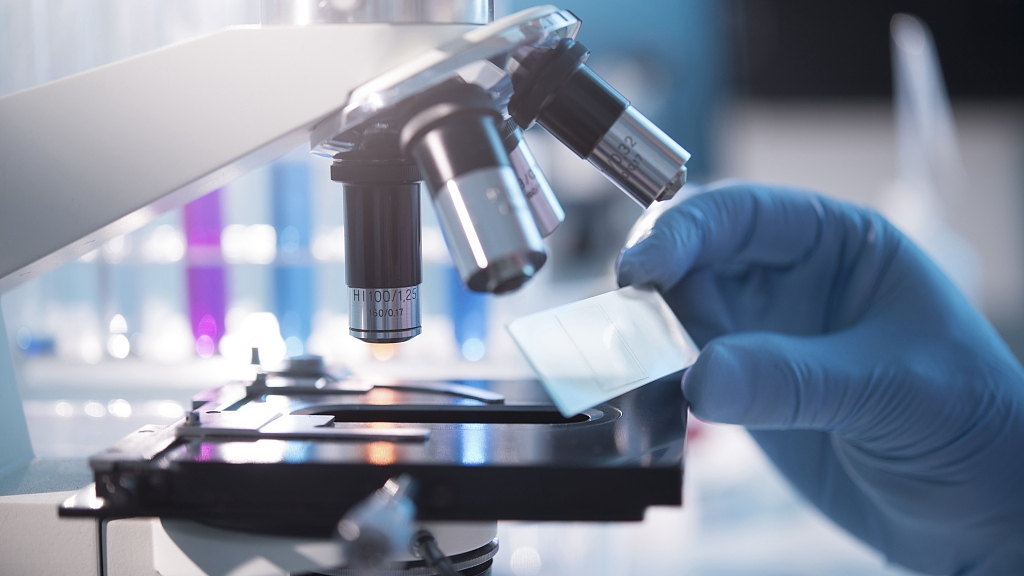In the article, the researchers first discovered through the study that the use of "genetic magic scissors" CRISPR/Cas9 can completely shut down HIV-1 replication and eliminate viruses in infected cells of animal organisms. This study is based on a 2016 proof-of-concept study by researchers who used genetically engineered rat and mouse models to incorporate HIV-1 DNA into the genome of each tissue in the animal model; It was found that this strategy was able to remove HIV-1 targeting fragments from most of the tissue genomes in the body of experimental animals.
[2] Genes Dev: Scientists find potential cells and genes that cause less whiteheads and apex
Doi:10.1101/gad.298703.117
Researchers from the Southwestern Medical Center recently discovered that cells that directly form hair can also reveal mechanisms that cause hair whitening, and these findings may help find treatments that treat the top and gray hair.
“This project was started to study the formation of tumors, but we finally found out why the hair became gray and identified cells that can directly form hair. With this understanding, we hope to develop a therapeutic drug in the future. Or a safe treatment to deliver the genes necessary for hair follicles to the cells to correct the errors in the cells," said the author Lu Le.
The researchers found that a protein called KROX20 can turn on expression in skin cells that can form hair shafts. These progenitor cells are capable of producing another protein called stem cell factor (SCF), which plays an important role in the color of the hair.
When the researchers deleted the SCF gene in the progenitor cells of the mouse model, the hair of the mouse turned white. If the cells expressing KROX20 are removed, the hair will not grow and the mice will become alopecia.

[3] Nat Med: Human rejuvenation is expected to be realized! Scientists have discovered that marijuana can Upside-down human brain aging
Doi:10.1038/nm.4311
With age, memory will also decline. Recently, a study published in Nature Medicine, researchers from the University of Bonn and the Hebrew University of Jerusalem found that cannabis can Upside-down the aging process of the brain through joint research. The researchers found that after long-term low-dose treatment with cannabis active ingredients, the condition of older mice can return to the state of two months after birth, which may be a new treatment for later researchers to treat brain diseases such as dementia. Provide new clues and hopes.
Like other organs in the body, our brains will age, and eventually the body's cognitive ability will decrease with age. It is worth noting that with age, it is difficult for us to remember new things at the same time. Or at the same time focus on multiple things, this process is very normal but it can cause dementia, so researchers have been trying to find new ways to slow or Upside-down the aging effect of age on the brain.
Researchers have now conducted research on mice that have a shorter life span in their natural state and tend to show significant cognitive impairment at 12 months of age; in this study, researchers will have a small amount of The cannabis active ingredient THC was injected into the body of mice of 2 months, 12 months, and 18 months of age (for 4 weeks). The researchers then tested the learning and memory performance of these mice. They found that mice given placebo alone showed natural age-dependent learning and memory deficits, compared to the administration of the cannabis active ingredient THC. The cognitive function of mice is as good as that of control mice at 2 months of age. The researchers believe that this therapy may completely Upside-down the memory loss of aging animals.
[4] Nature: Surprising! A common cerebrovascular disease is associated with the gut microbiome
Doi:10.1038/nature22075
According to a new study, researchers from the University of Pennsylvania's Perelman School of Medicine reported that bacteria in the gut microbiota promote the formation of cerebral cavernous malformation (CCM). This study suggests that altering the gut microbiome of CCM patients may be an effective treatment for this cerebrovascular disease. The relevant research results were published online May 10, 2017 in the journal Nature, entitled "Endothelial TLR4 and the microbiome drive cerebral cavernous malformations". The author of the paper is Dr. Mark Kahn, Professor of Cardiovascular Medicine at the University of Pennsylvania.
In CCM, dilated thin-walled blood vessels in the brain are clustered together to cause stroke and epilepsy. About 1 in every 100 to 200 people develop CCM. There are two forms of this disease. One form is sporadic CCM, which accounts for 80% of all CCM cases. The remaining 20% are familial cases of hereditary CCM.

[5] Cell Supplement: Targeted therapy can effectively eliminate HIV reservoirs
News reading: Study reveals a new method to address a major barrier to eradicating HIV
Scientists at the Gladstone Institute have recently discovered an enzyme called SMYD2, which may be a new therapeutic target that exposes hidden HIV. In fact, HIV infection is still the most difficult to cure lentiviral disease.
Although drug therapy can make HIV patients live the same life as normal people, it has obvious side effects. In addition, patients need continuous medical treatment to avoid virus reactivation hidden in the body. In the early stages of infection, HIV is concealed in the T-cell reservoir, and this hidden virus is reactivated after stopping the drug treatment.
In order to eliminate the HIV reservoir, scientists have developed a "stimulus-killing" technology that combines drugs that awaken the virus and further stimulates the body's immune system to kill these infected cells. Previous studies have made limited progress in re-activating HIV in storage, so scientists are trying to find new, more effective drugs.
"Our research focuses on a class of methyltransferases that have important regulatory roles in the reservoir of HIV," said lead author Melanie Ott, a senior researcher at the Gladstone Institute. "This enzyme also plays an important role in the development of many diseases, including cancer. There are also some studies that seek to find targeted inhibitors for treatment."
[6] Nat Med: Learning and memory are not good? The reason may be the immune response caused by viral infection.
Doi:10.1038/nm.4340
In a new study, researchers from the Languere Medical Center at New York University found that the body's immune response to viruses such as the flu virus and HIV could lead to learning and memory problems. The relevant research results were published online May 15, 2017 in the journal Nature Medicine, entitled "CX3CR1 + monocytes modulate learning and learning-dependent dendritic spine remodeling via TNF-α".
Evidence from studies in mice suggests that entry of the virus into the blood activates the "first responder" immune cells, the CX3CR1 highLY6Clow monocytes, which then release the inflammatory signaling protein TNFα. TNFα then migrates into the brain where it prevents the formation of neural cell connections required to translate sensory information into memory.
Although viral-induced immune system activation has long been associated with cognitive problems, its underlying mechanisms are rarely understood. In this new study, the researchers found that virus-associated immune activation leads to loss of connectivity between nerve cells in the brain circuit in the cortex (the area of the brain responsible for learning). These mice subsequently performed poorly in the learning ability test.

[7] CRISPR patent contenders zoom in again! Nature and Cell found 10 CRISPR enzymes for disease diagnosis
Doi:10.1038/nature19802 doi:10.1016/j.molcel.2017.04.008
Researchers from the University of California recently described 10 new CRISPR enzymes that, once activated, behave like “Pac-Man” to “chew” RNA, so these enzymes may be useful as diagnostics for contagiousness. A sensitive detector for viruses. The new enzyme is a CRISPR protein-Cas13a mutant. In September last year, researchers from Berkeley used the protein to detect specific sequences from viral RNA, and the researchers said that once CRISPR-Cas13a is the same When the target RNA is combined, it begins to cleave the RNA, making it easy to cut off the RNA associated with the receptor molecule, and generating fluorescence to help the investigator perform signal detection.
Previously, two research groups from the Bode Institute have paired CRISPR-Cas13a and RNA, and named the new system as the SHERLOCK system, which can detect viral RNA at very low concentrations, such as Detection of dengue and Zika virus RNA. Such systems can be used to detect any type of RNA, including cancer-specific RNA.
[8] Nature: Milestone breakthrough! For the first time in the laboratory, human hematopoietic stem cells are used to make hematopoietic stem cells.
Doi:10.1038/nature22370
In a new study, researchers from research institutes such as Boston Children's Hospital in the United States first produced artificial blood stem cells in the laboratory using pluripotent stem cells that produce almost any cell type in the body. This development opens up new avenues for studying the underlying causes of blood diseases and using the patient's own cells to produce immune-matched blood cells for therapeutic purposes. The results of the study were published online May 17, 2017 in the journal Nature, entitled "Haematopoietic stem and progenitor cells from human pluripotent stem cells".
Dr. George Daley, co-author of the paper and director of the Stem Cell Transplant Program at Boston Children's Hospital, said, "We are very close to producing true human hematopoietic stem cells in culture dishes. This research is the result of more than 20 years of effort."
Although the cells produced by these pluripotent stem cells are a mixture of true hematopoietic stem cells and other cells (ie, hematopoietic progenitor cells), they are capable of producing various types of human blood cells when transplanted into mice.

[7] CRISPR patent contenders zoom in again! Nature and Cell found 10 CRISPR enzymes for disease diagnosis
Doi:10.1038/nature19802 doi:10.1016/j.molcel.2017.04.008
Researchers from the University of California recently described 10 new CRISPR enzymes that, once activated, behave like “Pac-Man” to “chew” RNA, so these enzymes may be useful as diagnostics for contagiousness. A sensitive detector for viruses. The new enzyme is a CRISPR protein-Cas13a mutant. In September last year, researchers from Berkeley used the protein to detect specific sequences from viral RNA, and the researchers said that once CRISPR-Cas13a is the same When the target RNA is combined, it begins to cleave the RNA, making it easy to cut off the RNA associated with the receptor molecule, and generating fluorescence to help the investigator perform signal detection.
Previously, two research groups from the Bode Institute have paired CRISPR-Cas13a and RNA, and named the new system as the SHERLOCK system, which can detect viral RNA at very low concentrations, such as Detection of dengue and Zika virus RNA. Such systems can be used to detect any type of RNA, including cancer-specific RNA.
[8] Nature: Milestone breakthrough! For the first time in the laboratory, human hematopoietic stem cells are used to make hematopoietic stem cells.
Doi:10.1038/nature22370
In a new study, researchers from research institutes such as Boston Children's Hospital in the United States first produced artificial blood stem cells in the laboratory using pluripotent stem cells that produce almost any cell type in the body. This development opens up new avenues for studying the underlying causes of blood diseases and using the patient's own cells to produce immune-matched blood cells for therapeutic purposes. The results of the study were published online May 17, 2017 in the journal Nature, entitled "Haematopoietic stem and progenitor cells from human pluripotent stem cells".
Dr. George Daley, co-author of the paper and director of the Stem Cell Transplant Program at Boston Children's Hospital, said, "We are very close to producing true human hematopoietic stem cells in culture dishes. This research is the result of more than 20 years of effort."
Although the cells produced by these pluripotent stem cells are a mixture of true hematopoietic stem cells and other cells (ie, hematopoietic progenitor cells), they are capable of producing various types of human blood cells when transplanted into mice.




